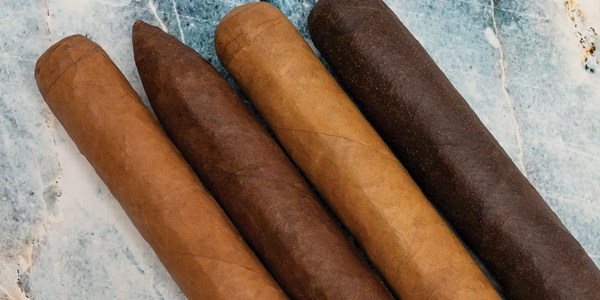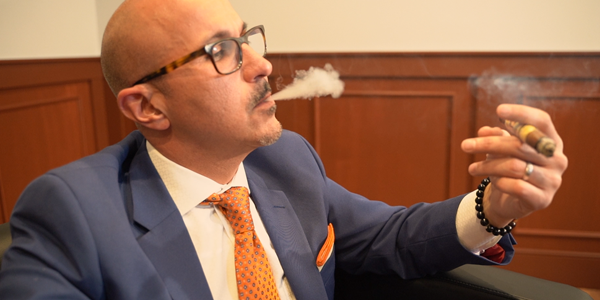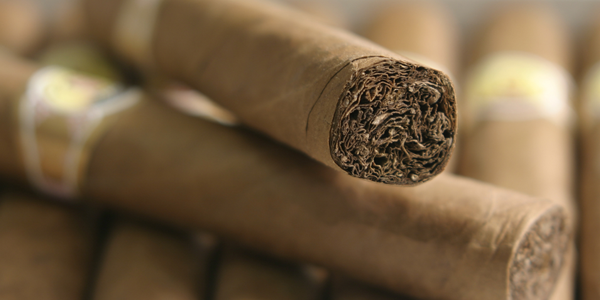How to Do a Blind Cigar Tasting
Blind taste tests have been around for decades. The most famous, of course, is the Pepsi Challenge which PepsiCo premiered in 1975 in shopping malls around the country to test consumers’ preferences for Coke versus Pepsi. Though the promotion originated as a marketing ploy, blind taste tests eliminate our brand biases. They’re a great way to develop your palate for cigars because you learn to identify a cigar’s profile in the absence of preconceptions you may have about its label.
The critics at Cigar Aficionado are best known for the blind tastings they conduct to rate cigars throughout the year. Their results culminate in the publication’s annual ‘Top 25 Cigars of the Year’ list. But, you don’t have to take the critics’ word as gospel. If you’ve got some pals who enjoy cigars as much as you do, here’s a few tips for hosting a blind tasting of your own.
Remove the Bands
Obviously, the cigar bands have to go, but you’ll want to keep track of what cigars you’re smoking so you can reveal your favorites at the end. An impartial third party is helpful here. Someone who’s not participating in the actual tasting should procure a mix of different cigars and replace each cigar’s band with a numbered or lettered band to identify it later.
Create a Scorecard
Taste is subjective, but it’s fair to assign a rating system that makes sense based on some common attributes (see below). Cigar Aficionado relies on a 100-point scale, for example, for each quality they measure in a premium cigar. You can follow a similar formula or create your own metrics with a 1-to-5 or 1-to-10-point scale. Keep it simple.
Smoke on a Clean Palate
Make sure you’re hydrated. Sip on water while you smoke. The sharper your palate is, the better you’ll be able to evaluate a cigar’s taste. To best interpret where a cigar comes from and its quality, avoid smoking multiple cigars back to back, and avoid pairing spirits with your cigar while you’re smoking it. At Holt’s, we love smoking cigars with whiskey, but spirits can throw you for a loop when you’re focusing on the tobacco.
How to Evaluate the Quality of a Cigar
Our dedicated panel of cigar lovers at Holt’s reviews cigars on a regular basis. While we don’t perform a blind taste test for our staff reviews, we do evaluate cigars based on the following criteria.
Appearance
Even without its proper band in place, a cigar’s appearance means a lot. The wrapper on a cigar offers telltale signs of its quality. Is it smooth and oily or rough and splotchy? Are there noticeable veins? Was the cap applied with precision? Are there any noticeable soft spots when you gently squeeze the cigars between your fingers? The wrapper is the most expensive component in a premium cigar and it can represent sixty percent or more of a cigar’s flavor. A seamless wrapper leaf equals bonus points.
Draw
After you cut a cigar, does air pass through it easily when you’re drawing on it? The draw is especially important after you light a cigar, but you should be able to pull air through it before it’s lit. If the draw is too tight or too loose, there may be an issue with its construction. Expect some resistance in a cigar’s draw but no noticeable obstructions.
Construction
Premium long-filler cigars are handmade by experienced rollers. The filler leaves are assembled inside the binder leaves according to specific ratios, and together they are finished in a wrapper leaf before the cap is applied. At the end of the process, a good cigar will combust evenly, and the integrity of its shape will remain intact from the first puff to the last. Cigars that unravel or seize up while you’re smoking merit a low score.
Burn
At the foot of a cigar, expect a nice clean and even ash to develop as you smoke it. The bottom and top portions of a good cigar will combust at the same pace. A firm ash that you can tap off at will is a sign the cigar was made well. A flaky, uneven ash is messy and undesirable.
Taste
Taste may be personal, but a cigar is generally either good or bad, and your opinion counts for much when you’re assigning a score to what you’re smoking. The common tasting notes we encounter should be smooth and agreeable, not bitter. Under-fermented tobacco results in a harsh taste. Well-blended, well-aged cigars display desirable flavor.
Complexity
Does the cigar’s flavor change as you smoke it, or is it the same from beginning to end? Complex cigars offer transitions of taste, and they stimulate more areas of your palate.
Aroma
Does your cigar fill the room with seductive clouds of smoke or clear it out like teargas? Good cigars produce appealing aroma.
Finish
A cigar’s finish refers to the taste that resonates on your palate in between puffs as well as to its overall aftertaste when you’re done smoking. A desirable finish on a cigar stimulates your appetite to smoke another one, but you won’t hesitate to drop one with a bitter or chalky finish into the ashtray before you’re done smoking it.






